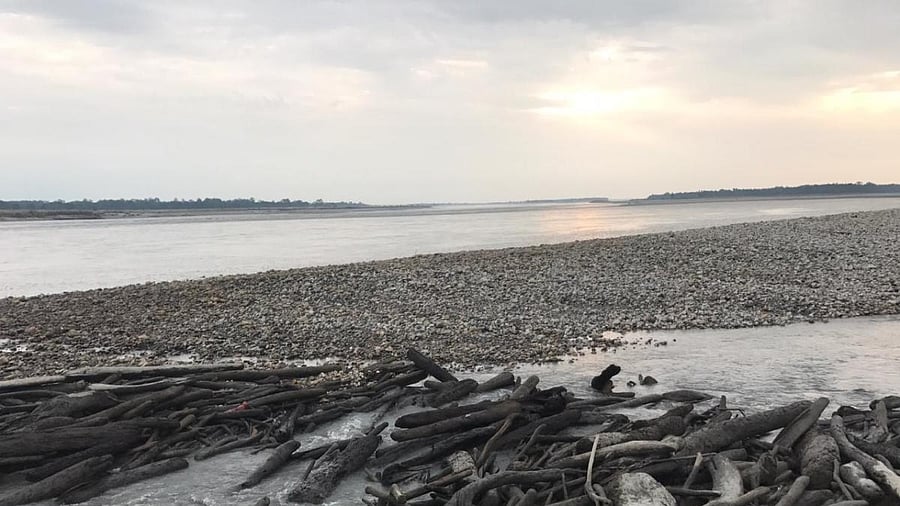
Yarlung Tsangpo river in upper reaches of China that flows into the Siang and Brahmaputra rivers in India.
Credit: Reuters Photo
China has begun constructing the world's largest hydropower dam, known as the Motuo Hydropower Station, on the Yarlung Tsangpo River in Tibetan territory. Recently, Chinese Premier Li Qiang presided over a ceremony to mark the start of the project and called it the “project of the century”.
Xinhua reported that the project would consist of five cascade hydropower stations, producing an estimated 300 million megawatt hours of electricity annually at a cost of about 1.2 trillion yuan (£124bn). The dam is planned to overtake the Three Gorges dam - also located in China - as the biggest in the world, and will become operational in the 2030s.
The dam will be located on the lower reaches of the Yarlung Tsangpo on the eastern rim of the Tibetan Plateau. Experts have raised concerns that the dam would enable China to control or divert the flow of the transboundary river, impacting India and Bangladesh, which both lie downstream.
China, the world’s biggest carbon emitter, is operating a huge renewable energy expansion as it seeks to reach emissions reduction goals and stabilise its power supply. It has tens of thousands of hydropower projects, far more than any other country. The Yarlung Tsangpo megadam will reportedly harness the power created by the river dropping 2km in about 50km as it winds through a canyon on a U-shaped bend.
The dam has drawn criticism from India and Bangladesh, through which the river runs, as well as Tibetan groups and environmentalists.
India and Bangladesh have voiced concerns over the project, fearing the water could be held or diverted away from them. The Yarlung Tsangpo becomes the Brahmaputra River as it flows south into India’s Arunachal Pradesh and Assam states and finally into Bangladesh as the Yamuna River. Damming it could affect millions of people downstream.
“China can always weaponise this water in terms of blocking it or diverting it,” Neeraj Singh Manhas, special adviser for South Asia at the Parley Policy Initiative, told the BBC in January.
Tibetan groups have also noted the presence of sacred sites along the river and the lack of information about potential population displacement. Other hydropower projects in Tibet have inspired rare protests, resulting in brutal crackdowns from authorities, according to activists.
Last year, hundreds of people were arrested while protesting against the Kamtok dam on the upper reaches of the Yangtze River, which they said threatened to displace thousands of residents and submerge ancient Buddhist monasteries. The Three Gorges Dam is estimated to have displaced about 1.5 million people. Tibet is much more sparsely populated, with some 2,000 people displaced for the construction of the Yagen Hydropower Station in 2015.
Environmentalists have also expressed concern about wildlife in the region, as well as the significant tectonic shifting, severe landslides and extreme geography where the dam is expected to go.